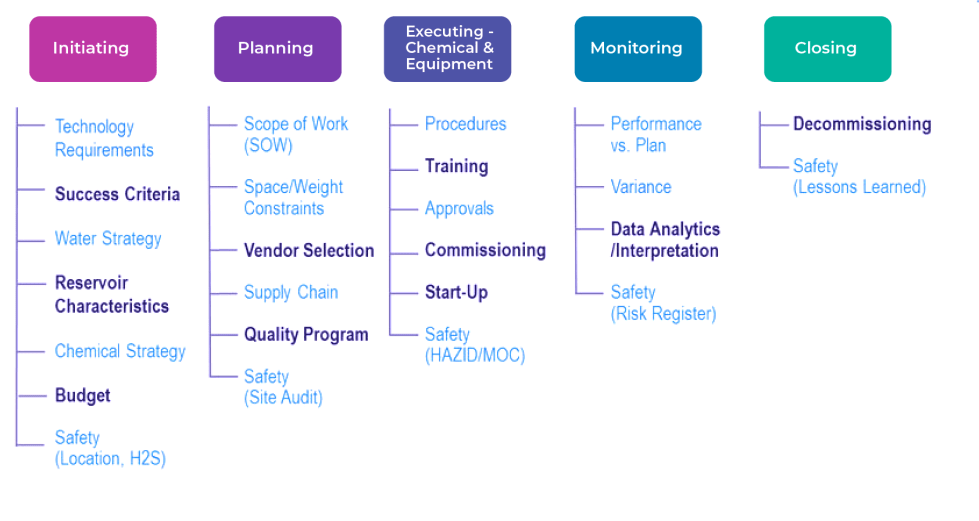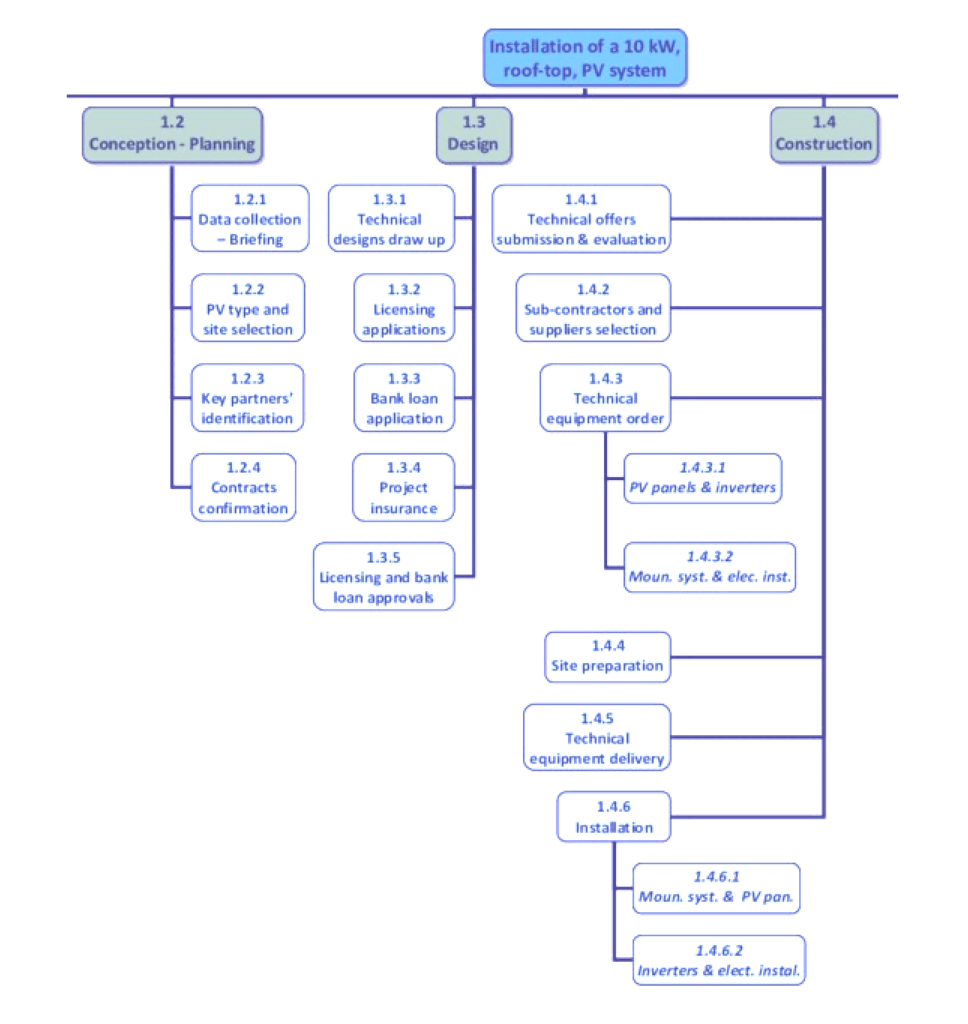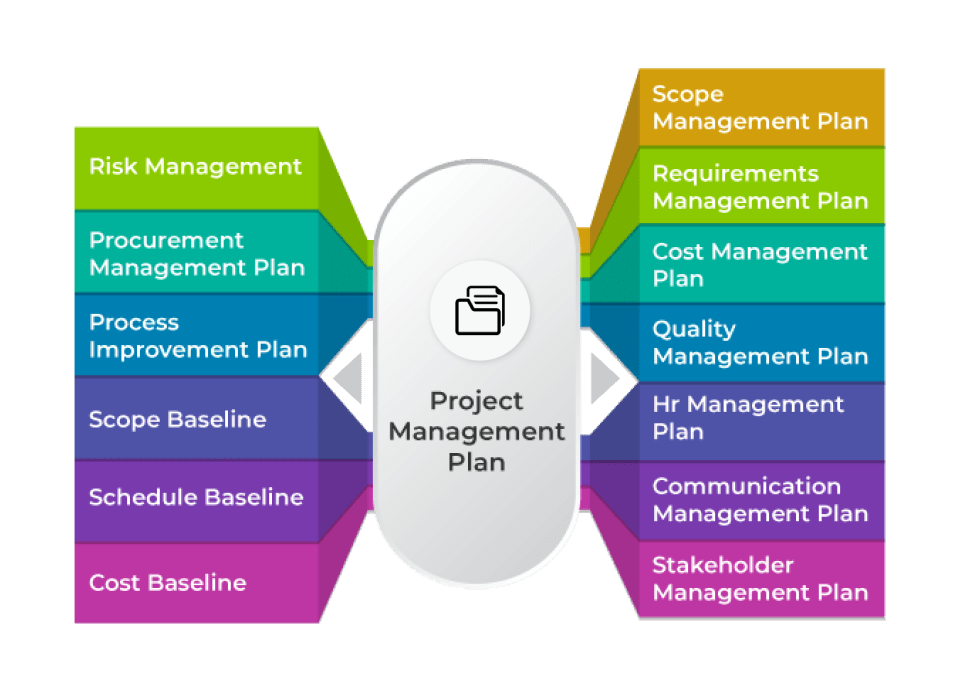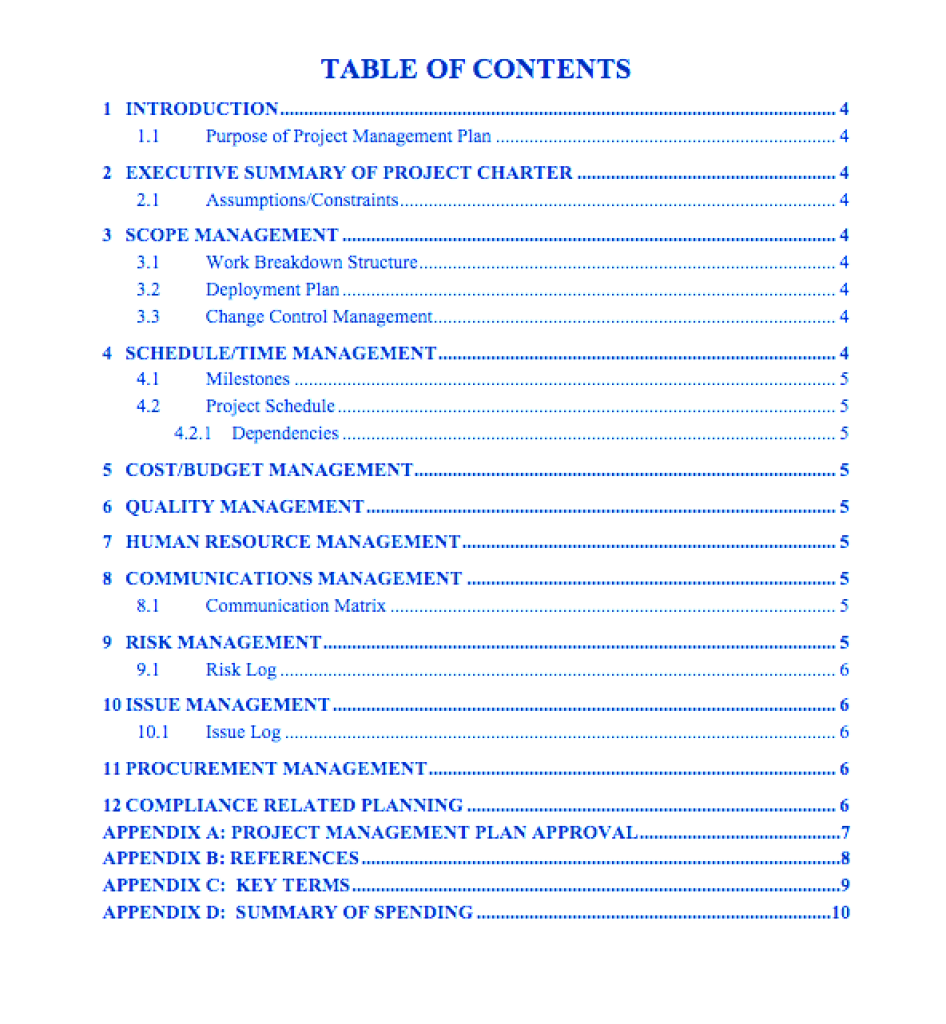Project Management Guide
Project Management Guide
What Is Project Management?
What Is a Project?
Why Is Project Management Important?
Project Life Cycle Phases
- Project Initiation
- Project Planning
- Project Execution
- Project Monitoring
- Project Closure
Project Management Methodologies
- Waterfall Project Management
- Critical Path Method
- Critical Chain Project Management
- Agile Project Management
- Scrum Project Management
- Kanban Project Management
- Lean Project Management
- Six Sigma Project Management
- PRINCE2
- PRiSM
- PMBOK Method
Project Management FAQ
What Is a Project Management Plan?
Every project is a story that starts from the moment the contract is signed right until the deliverables are handed over. Such stories are either short and to the point, while others meander pointlessly. Some stories include a series of twists and turns, while others play out chronologically, one after the other. Ultimately, it is the project manager who manages the project and decides the arc of this story. And to achieve the desired results, they require a project management plan.
Let’s deep dive into the meaning of a project management plan and its implications.
What is a Project Management Plan?
A Project Management Plan (PMP) is an official document that contains details on how a project is initiated, executed, tracked, and controlled.
In essence, it contains comprehensive details regarding:
- What are the project deliverables or goals?
- How will the project team achieve said goals?
- Who are the stakeholders involved with the project?
- How will the team members measure and report upon the progress of larger projects?
- What would be the mode of project communication?
Even though the PMP is envisioned right at the initial stages of project definition, it evolves along with the project.
What is the Purpose of a Project Management Plan?
When one thinks of a project management plan, it immediately conjures up images of the Gantt Chart and scheduling tools. However, the role, nature, and purpose of a project management plan are a lot more diverse.
For starters, it acts as a baseline for the scope, schedule, cost, performance, and other such variables. When a project manager or team members notice a variation from the baseline, they will make adjustments to scale back according to the project management plan. In a dire situation where the adjustments fail to bring the deviations back on track, the project manager would have to request a change in the baselines formally.
Next, the document offers a frame of reference to enforce project management policies and navigate the uncharted areas. It operates as a legacy system, aiming to standardize all the processes and practices for similar projects. These can also be repurposed. For instance, a project management plan for larger projects can be a collection of smaller plans for component projects.
Finally, it plays a crucial role in determining the final outcome of the project. Think of it as a blueprint for the project. It ensures that each and every project team member is on the same page and working towards the common goal.
Components of a Project Management Plan

Before you start creating a project management plan, you should be familiar with the key parts of a typical project management plan. Here’s an overview of these components:
- Executive summary – a high-level overview of the project captured in a few descriptive paragraphs.
- Corporate alignment – justification of how the project satisfies organizational goals. This section also carries the stakeholders’ analysis.
- Project scope – a snapshot of the purpose and objectives of the project. Typically, it also contains the project breakdown structure (PBS). Wherever possible, even the gray areas must be defined to tackle contingencies.
- Project deliverables – In continuation with the PBS, the PMP should also carry a Work Breakdown Structure (WBS), which defines all the project deliverables.
- Project schedule – a tentative timeline of all the events and activities.
- Project feasibility and risk assessment – the possible operational, technical, economic, and organizational feasibility of the project, along with the associated risks and backup plans.
- Constraints – a list of all the limitations, such as resource shortage, fixed budget, etc., which could impact the overall output.
- Human resource requirements – composition of the project team, key leaders, and the roles and responsibilities ascribed to every team member.
- Material or equipment requirement – a summary of the material or equipment resources, including space, hardware, and software tools that will be required.
- Risk management – a brief regarding the risk management strategies.
- Project issues – possible roadblocks that may come in the way of successful project execution.
- Project change management – techniques to adapt according to the project changes.
- Project communication management – communication is key to a successful project, hence the project manager should define the communication channels employed to involve all stakeholders.
- Related products and project deliverables – focus on the project interdependencies and how the outputs of the said project will affect other projects or products.
- Approvals – signatures of the stakeholders approving the project.
- Appendices – relevant documents, such as case studies, notes, and other attachments.
Steps to Develop a Project Management Plan
According to the PMBOK® Guide, the PMP is a culmination of the Develop Project Management Plan and falls within the purview of Project Integration Management Knowledge. It is reiterated that while you may write a project plan right at the beginning, it will evolve and diversify with the project.
larger projects, project managers may now even create a project plan at once. It gets divided into phases, which are then developed, streamlined, revisited, and updated with time.
With the above in mind, here is a step-wise guide for planning your project:
1. Gather Requirements From Key Stakeholders
After creating the basic project charter, your first line of action is to shortlist the key stakeholders. Circulate the document within their circles to gather inputs so that you can generate the corresponding outputs. Naturally, you will have to employ effective communication to carry forward this stage. The lack of project communication could result in missing out on critical details, which could cause the project to fall through!
2. Define the Scope of the Project
Once you have gathered the inputs from the key players, you need to answer the burning question – What are the final project deliverables that will resolve the customer pain points. Your project scope statement will clearly define the boundaries of the project. As such, defining the scope of the project is the most vital part of project management.
Prepare a Work Breakdown Structure

Now that the scope of the project is ready, it is time to break down the high-level objectives into smaller units called work packages through work breakdown structure (WBS). The work packages will facilitate planning and coordination and help with decisions related to priority assigning and resource allocation
3. Define Project Activities
Upon arriving at the work packages, these are further broken down into project activities. It includes a list of actions required to create the deliverables of every work package. These activities then have to be arranged in a logical and chronological sequence. However, to maximize efficiency, the project manager must also sequence activities in parallel to reduce the time-to-market.
4. Carry Out Project Estimates
As the project manager describes the scope and breaks it down into smaller work packages and corresponding deliverables, it offers a granular estimate of the activity durations, costs, and resources. This project estimate helps determine project viability while also setting expectations and budget limitations.
5. Allocate Resources Based on Priority
While creating the work breakdown structure and preparing a list of activities, the project manager ascribes priority to the tasks. Accordingly, they may proceed with assigning resources in the form of labor, material, technology, equipment, and space. A combination of priority, complexity, and level of importance also influences the skills required to complete the task.
6. Factor in Contingencies
Risk management and mitigation form an essential component of planning your project. A well-written PMP will factor in the contingencies depending on the historical data of similar or related projects. Management of risk must include internal and external considerations while identifying the variables. For example, the consumer price index or governmental policies are an external factor, while work culture and team performance are internal factors.
7. Prepare a Performance Measurement Baseline
Now that you have laid the foundation of the project, it is time to develop an integrated performance measurement baseline for the project scope, schedule, and cost. You will be comparing your team’s performance with this baseline from time to time and making proportionate changes during the project lifecycle. It helps address issues before they cascade into graver problems.
8. Develop Subsidiary Plans
Your PMP is a high-level plan governing the entire project as a whole. However, for finer control and management, you will require subsidiary plans to manage:

- Scope
- Schedule
- Cost
- Quality
- Resource
- Communication
- Risk
- Change
- Requirements
Get your project teams to draft the same in support of the PMP. Obtain all the required approvals to formalize the PMP. Finally, wrap up the process with a project kickoff meeting where you assign roles and responsibilities to all team members. Such a meeting will set the tone for a highly engaged, energized, and focused project team.
9. Document Historical Data
Compile all the documents associated with project planning and management in a centralized database. It acts as a knowledge base for ready reference while guiding each and every project team and its members. After the successful completion of the project, it also serves as a legacy document to draw insights and learn from the project management practices employed therein.
Project Management Plan Example
You may come across several project management plan templates online, and your choice may vary depending on your project and its intricacies. Here are a few project management plan examples worth considering:

Final Thoughts
A project management plan is a strategic document critical for ensuring a project’s success. Fortunately, creating an effective project management plan is not as difficult or overwhelming as it may appear. Follow the guide above to receive stellar results, and remember to adapt your PMP as per the dynamic changes during the project development phase!
